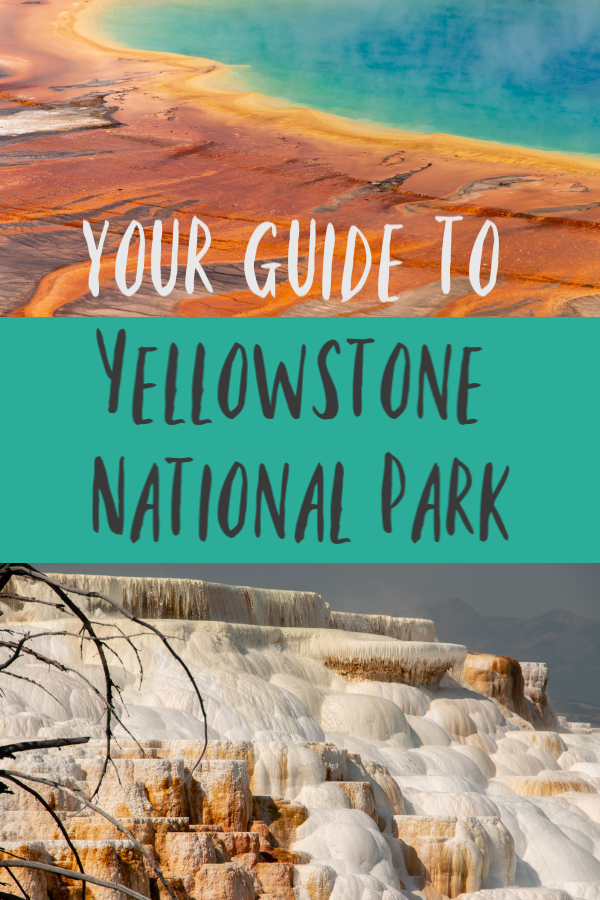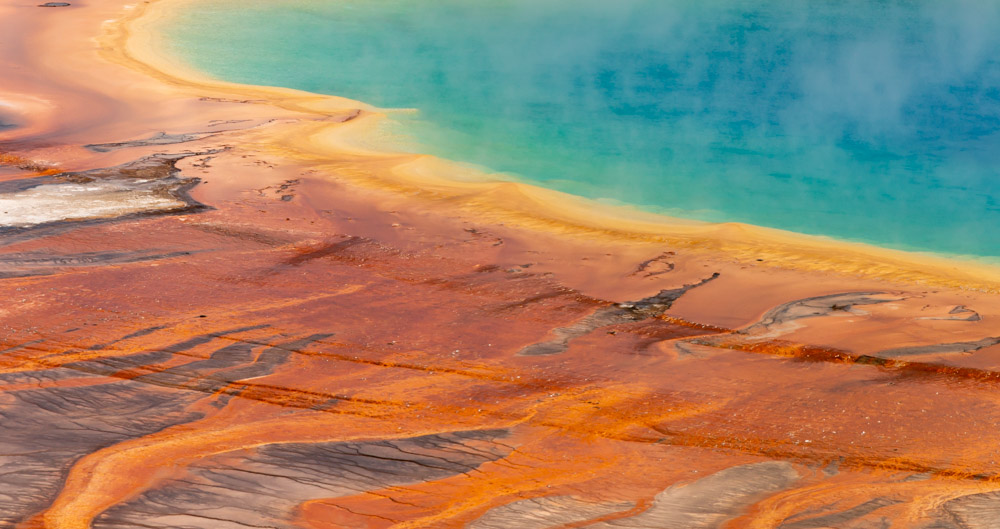We went to Yellowstone National Park as part of our big 2017 Solar Eclipse road trip. After spending a few days in Grand Teton National Park, it was the obvious next stop for us. You definitely want to see more than just Old Faithful. There are geysers, boiling blue pools, and many more colorful geothermal features all across the park. Add in all the animals to spot and one can easily spend a week in Yellowstone.
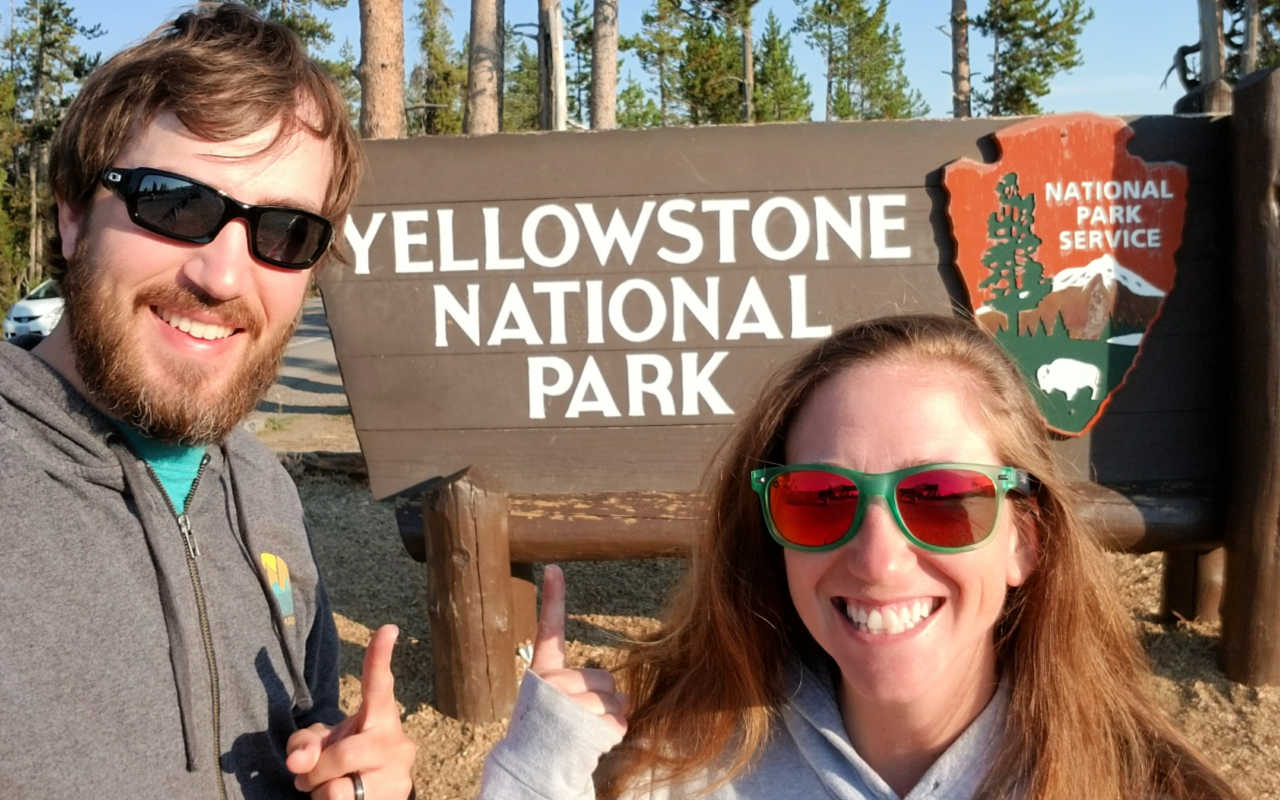
Where to Stay
Yellowstone is a large spread out park so it helps to stay somewhere centrally located if possible. Norris Campground and Canyon Village are two ideal places to stay because you will be about equal distance from all major areas. We didn’t make reservations and were unable to get a site at the Norris campground. Luckily we were able to get a site at the Indian Creek Campground. After one night we moved to Tower Fall Campground because of construction on the road just south of Indian Creek campground.
Another thing to consider when choosing where to stay is the proximity to Hayden Valley or Lamar Valley. These are two of the best places to see wildlife. Your chances of seeing bears, wolves, and elk are best around sunrise and sunset. We drove to Lamar Valley each evening to animal watch.
Mammoth Hot Springs
After securing our campsite we headed to Mammoth Hot Springs just up the road. Mammoth doesn’t have the spouting geysers like other areas of the park but its unique travertine terraces look like rock waterfalls frozen in time. The slow trickle of the springs dissolve minerals in the rock and then deposit it on the surface. Thermophiles grow in the hot water creating colorful swirls and lines in the white calcium carbonate rocks.
The springs are ever changing and many dry springs can be seen in the area or trees being encased in rock due to a new spring sprouting up. Springs can change location due to groundwater changes or seismic movement so a visit years apart can be quite different.
Mammoth Hot Springs can easily be explored in two to four hours depending on physical fitness. There are a number of stairs to walk the entire area. Pick up a free brochure from the Albright Visitor Center. The food options in Mammoth are limited, but Gardiner, Montana is a short drive north and has a wider variety of food to choose from.
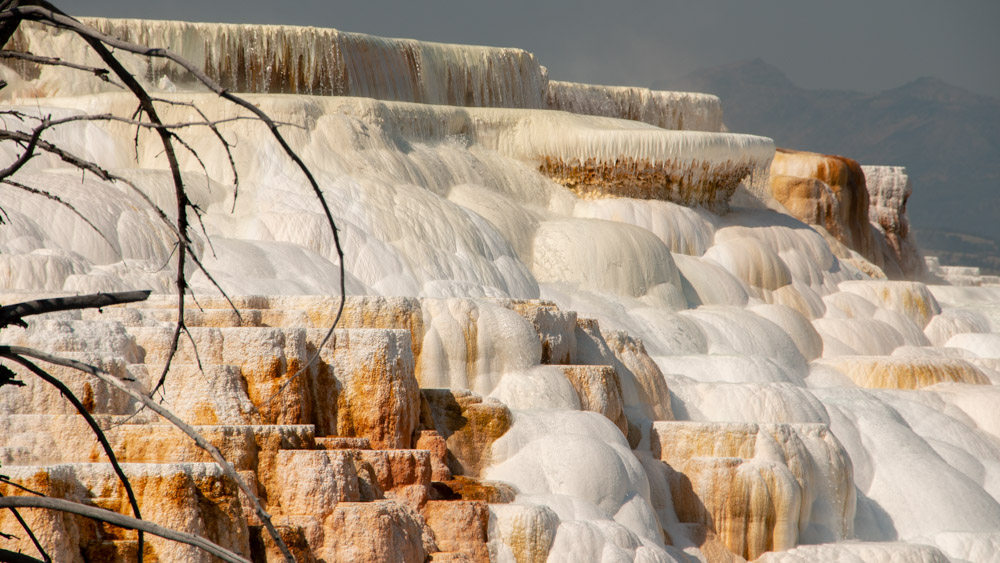
Tower Fall
The next day we moved to the Tower Fall Campground. Tower Creek flows into the Yellowstone River here and the area is full of spires of rock near the waterfall. It has a lookout with amazing views of the canyon where you can see the river and layers of cooled lava along the canyon walls.
Mt. Washburn
As you head south from the Tower Fall area you will pass Mt. Washburn. This 10, 243 foot peak is a popular day hike. Even if you don’t hike to the top there are nice views in the area. We didn’t hike to the top on this visit, but we did see a pair of grizzlies crossing the road one evening while returning to the Tower Fall Campground.
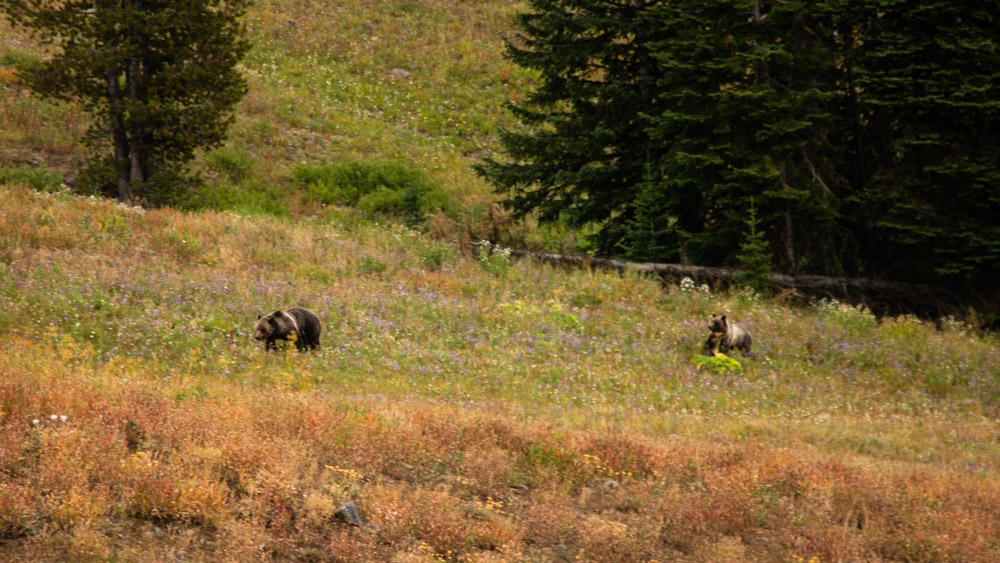
Grand Canyon of Yellowstone & Artist Point
Just south of Canyon Village are Lower Falls of the Yellowstone and the Grand Canyon of Yellowstone. There are lookouts on the north and south side of the canyon. Artist Point is on the south side and is where the iconic view of Lower Falls of the Yellowstone. The colors in the canyon will take your breath away. An hour or two would be enough to see the south side stops and maybe another hour to see the north side.
Mud Volcano
The Mud Volcano area is a small but worthwhile stop. It has a strong smell of sulfur due to the multiple boiling lakes. Looking back across the road and across the river you can see a large bulge in the earth that is uplifting due to the volcano underneath Yellowstone. There’s a good chance you may see bison walking among the boiling ponds and streams here.
Upper Geyser Basin
Upper geyser basin is where Old Faithful is located and has a high concentration of springs and geysers. Be prepared to do some walking! Parking will be hard to come by most places in the park but especially here.
The first place you should go is the visitor’s center. Go to the information desk so you can check the predicted eruption times. There are six major geysers that erupt regularly enough that they offer predictions for them. Five of them are located in this area and they are: Old Faithful, Grand, Riverside, Daisy, and Castle Geysers. These predictions are estimates and have a 30 minute +/- to 1 hour +/- time frame for their eruptions. After looking at the times try to map out a route to see all the geysers when they are predicted to erupt. We got lucky and were able to see all five in a single day.
Old Faithful
Old Faithful erupts about every 90 minutes and will have a large crown gathered around. Sadly many people come just to see this one geyser and then leave! There are other geysers that are arguably better than this one but Old Faithful is very predictable and located right outside the visitor center.
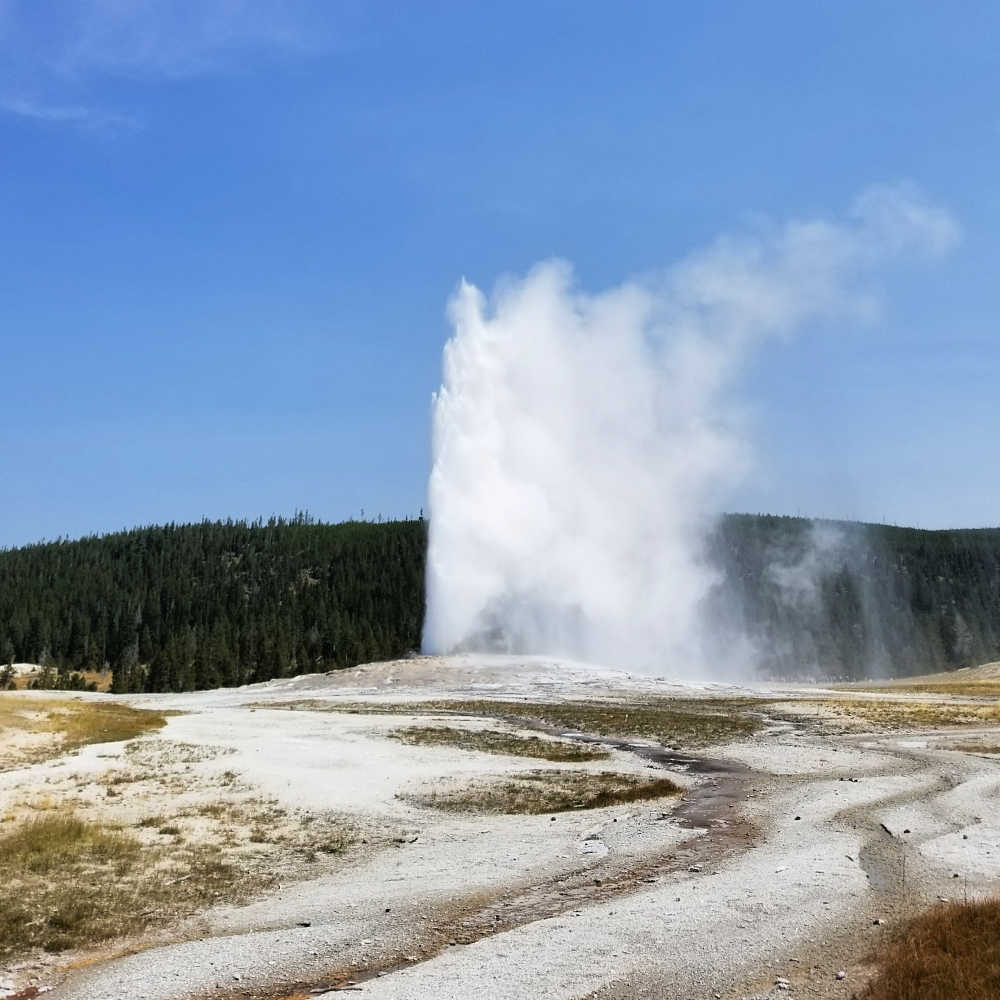
Grand Geyser
Grand Geyser is one of our personal favorites, and it has a longer eruption window than the other geysers here but is well worth it. The eruptions are higher and have a larger volume of water. Grand geyser tends to erupt in pulses rather than a steady fountain like Old Faithful. Also when it looks like it is done, wait a minute and see if it has another large burst of water. Both times I’ve seen it erupt it had a lull where it appeared to be finished and then shot out new burst of water.

Riverside Geyser
Riverside is another that could easily be argued to be better than Old Faithful. It is on the bank of the river and has a beautiful stream that shoots out over the river. It has a rather long lasting eruption so you will have plenty of time to move around to take pictures from different angles.
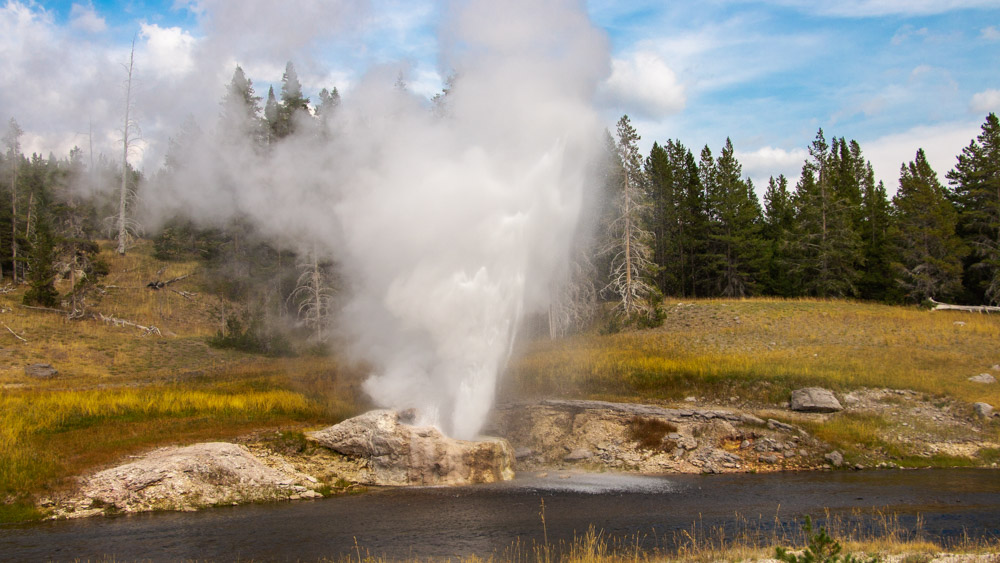
Daisy, Castle, and the rest
Daisy and Castle are both unique in their own way but don’t quite have the magnificence of the other three mentions. Still worth seeing if you have the time. As you stroll the boardwalks you will see many other small geysers. Some will be constantly erupting while some may erupt every few minutes. There will be crackling pool and roaring vents. The ground feels alive here.
One of the most awe-inspiring sites is to be there early while it is still cool. Their is steam rising from all over!
Black Sand Basin & Biscuit Basin
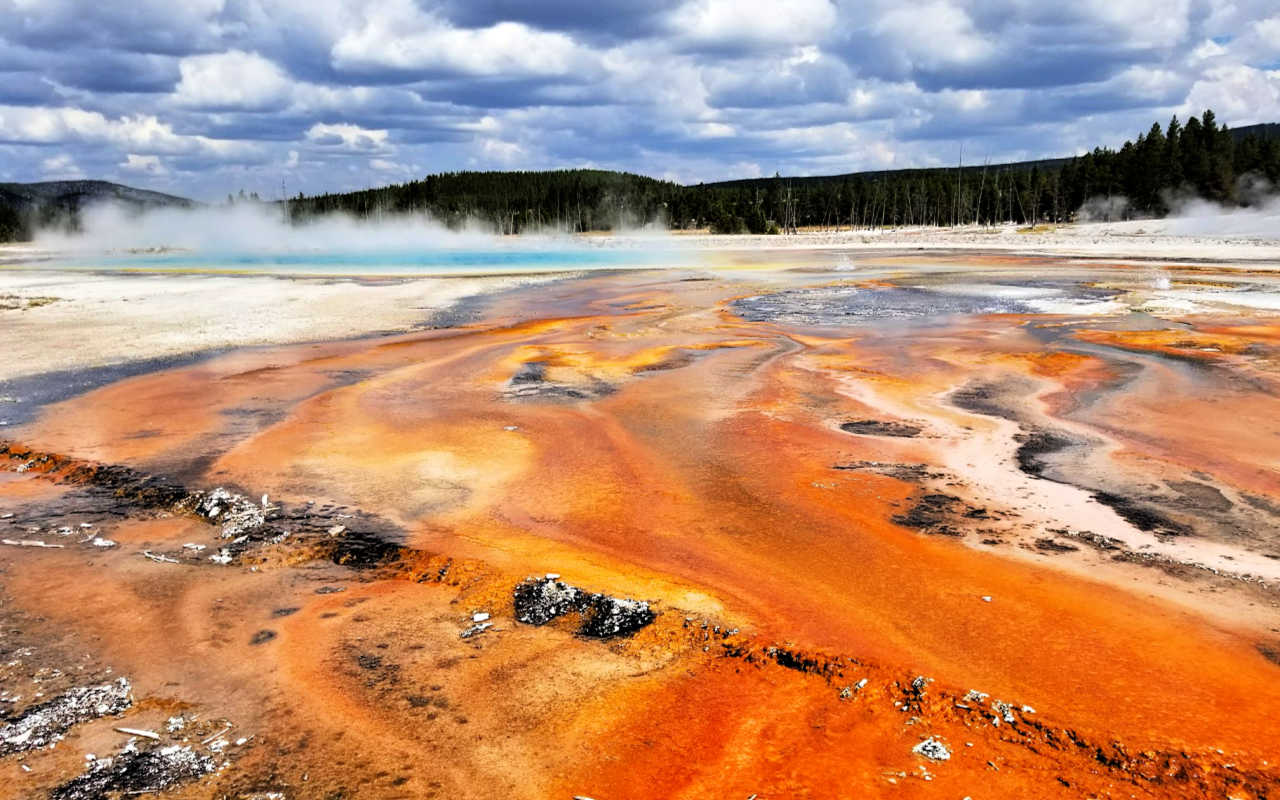
These two small basins have some beautifully colored pools. There are brilliants blues and yellows, along with vibrant oranges. Sunny days with a few puffy clouds make the colors really pop. You won’t regret making the short stop to these two basins.
Expect to spend at least half a day in the upper geyser basin area. Best to get there early so you can take as much or little time as you want. Whatever time you have left can be spent in the Lower or Midway geyser basins.
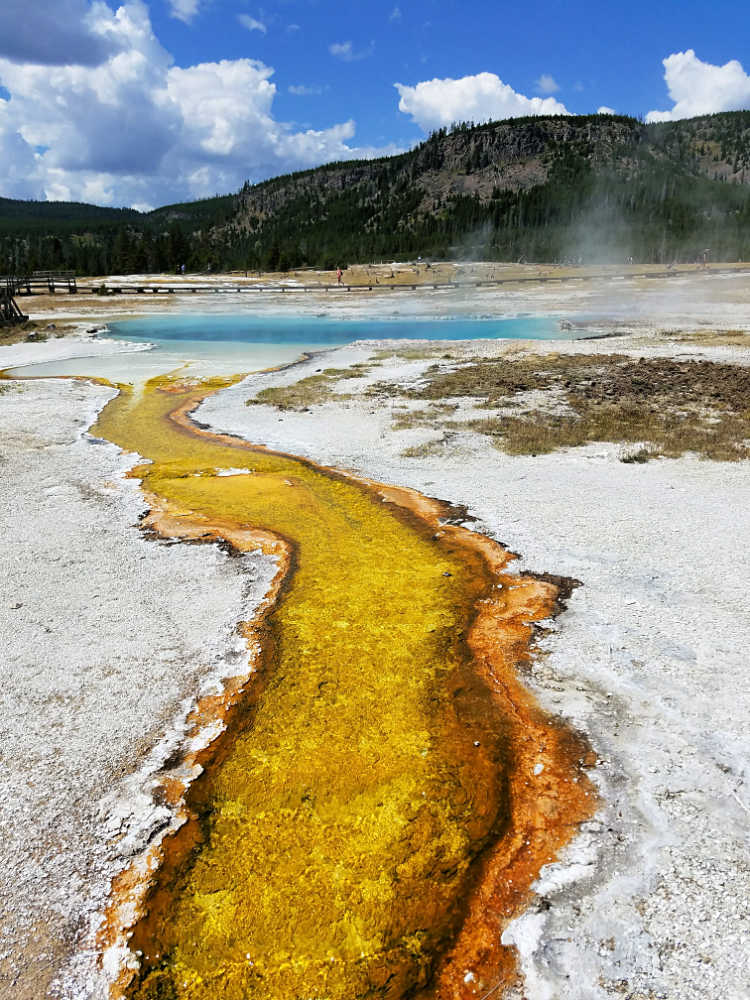
Lower Geyser Basin
North of Upper Geyser Basin in the Lower Geyser Basin is the Fountain Paint Pot Trail. This half mile loop offers some great views of bacterial mats and mud pots. The mud pots can sometimes be dry in late summer depending on rain and snow melt. There are a couple of very active smaller geysers on this trail.
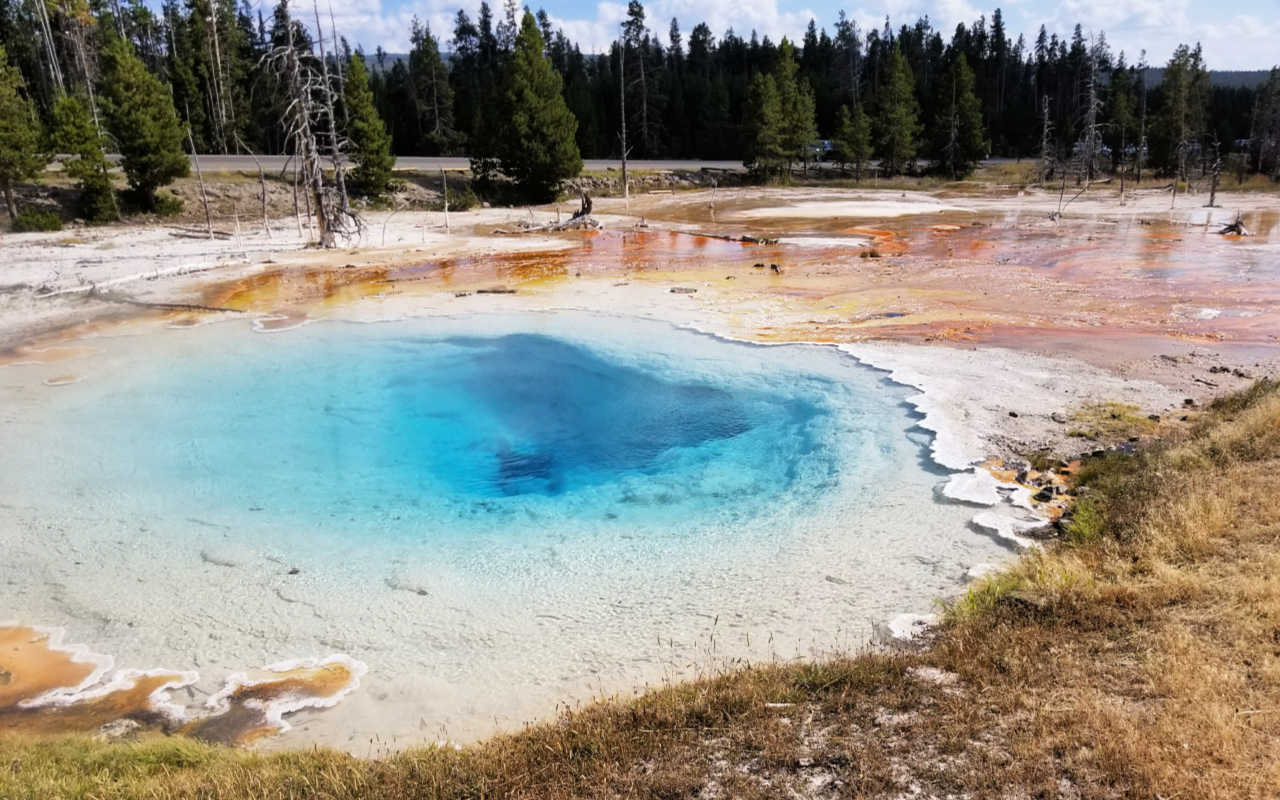
Firehole Drive
Firehole Lake Drive is a 2 mile one way drive in the same area. One of the very best geysers in the park is on this drive. Great Fountain Geyser is on par with Grand Geyser, maybe even better. This is the 6th and last geyser that park rangers offer an estimated eruptions time for. It erupts about every 10-14 hours. The 4 hour window tests most people’s patience. We were lucky and pulled up to see the pool was overflowing and boiling. This typically signifies an eruption is imminent. After about 30 minutes of boiling and splashing it finally erupted. This geyser shot huge fountains of water 100 ft into the air. It sometimes shoots up to 200 ft and usually lasts for 45-60 minutes.
Next to Great Fountain is White Dome Geyser which erupts about every 30 minutes and shoots water up to 30 ft into the air. Continue the drive to Hot Lake and very more bacterial mats.
Unless you plan on waiting for Great Fountain Geyser, this area can be seen in about an hour or less.
Midway Geyser Basin
Grand Prismatic Spring is the main attraction of this basin and one of the most iconic sites in Yellowstone. There are two ways to see the spring and both are worth every second. First park in the Grand Prismatic Spring parking lot and walk along the boardwalk that goes up to the spring. On this path you will get a true sense of how big the spring is. You will also get an up close few of the bacterial mats of thermophiles that grow in the warm waters.
Make sure to hold on to your hat or any other belongings so they do not blow into the spring. Also do not step off the boardwalk and damage the bacterial mats.

Once you are done here drive south to another parking lot to make a short hike to the viewpoint above the spring. Expect to spend about two hours total or one hour at each trail.
Norris Geyser Basin
This is one of the hottest and most acidic basins in the park. Near Porkchop Geyser is where an Oregon man died from falling into a pool after leaving the boardwalk. The pool dissolved his body, including his bones.
Having said that this is another beautiful sections of the park. There are many colorful milky blue pools. The tallest active geyser in the world is here as well. Steamboat Geyser can erupt up to 300 feet high, but its eruptions are unpredictable can be days or years apart.
We had to rush through this area because storms were moving in. In about an hour, maybe a little more, we saw everything in this basin. Granted we had to speed walk, it can be done. Two to three hours would likely be enough to see all the pools, steam vents, mud pots, and geysers in Norris.
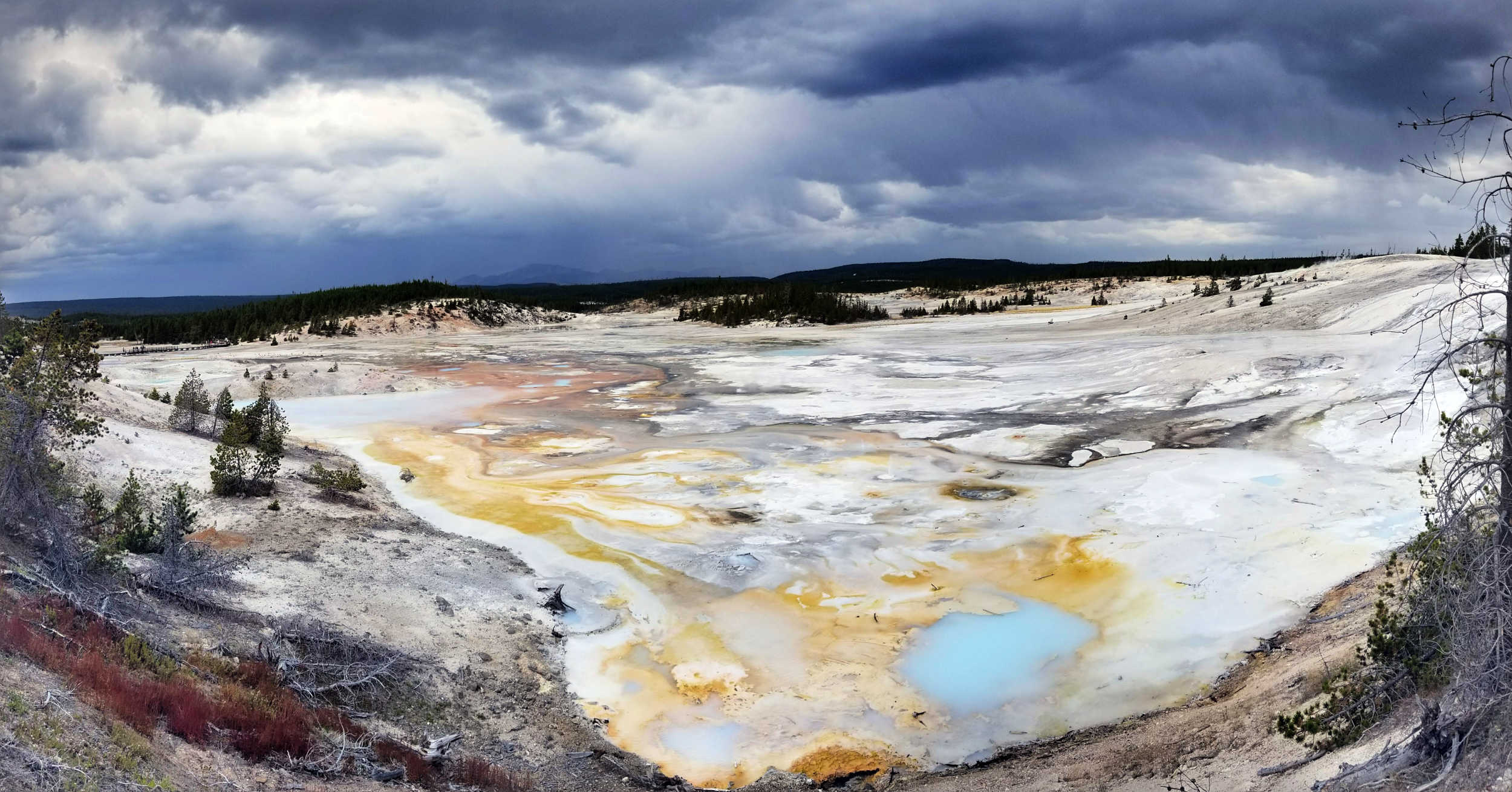
Keep Wildlife Wild
Yellowstone has more than geysers and beautifully colored hot springs, it is also a place to see a variety of wildlife. Being able to see all these animals is a privilege so any visitors should treat the animals with respect. Also remember these are wild animals and will protect themselves and their young. For bears and wolves visitors are to stay at least 100 yards (91 meters) away and 25 yards (23 meters) for all other animals. This is for visitors and the animals protection.
Also you should never feed any animals in the park. Feeding animals can cause them to associate humans with food which can lead to more interactions that can result in injuries to wildlife and humans. Certain foods that we eat also don’t provide the nutrients that animals need.
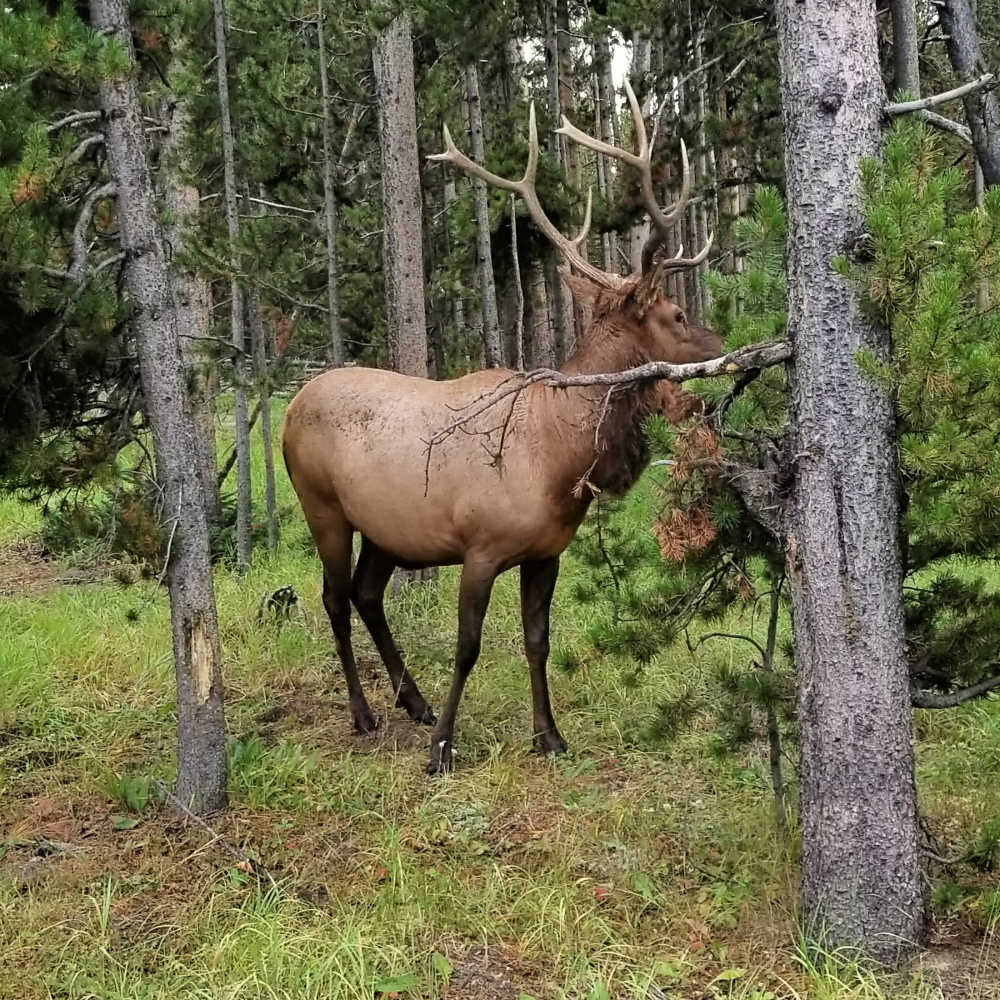
Where To See Animals
One of the animals you will see the most are bison. They are found all over the park and are often in the middle of the road. One or many bison frequently block the roads so drive carefully. Be courteous to fellow visitors and if you would like to take photos pull into a turnout. Please do not stop in the middle of the road unless you are unable to get by the bison. We constantly saw park rangers telling people to keep traffic moving due to people stopping in the road.
Bears and wolves are the big animals most people want to see. Most of the wildlife can be spotted nearly anywhere in the park, but there are place to raise your chances. The chances of seeing bears or wolves seems to be higher in Lamar or Hayden Valley due to the wide open views. To get the best views it is a good idea to have binoculars or a spotting scope. If you see a group of people all looking in the same direction it is a good indicator they are looking at an animal. If you are driving by and everyone is looking in different directions keep driving.
The best thing to remember is always be on the lookout. While in your vehicle you should be scanning the side of the road. Also venture out right after it stops raining. Some of the best animals we’ve seen were either while it was raining or just after it has stopped.
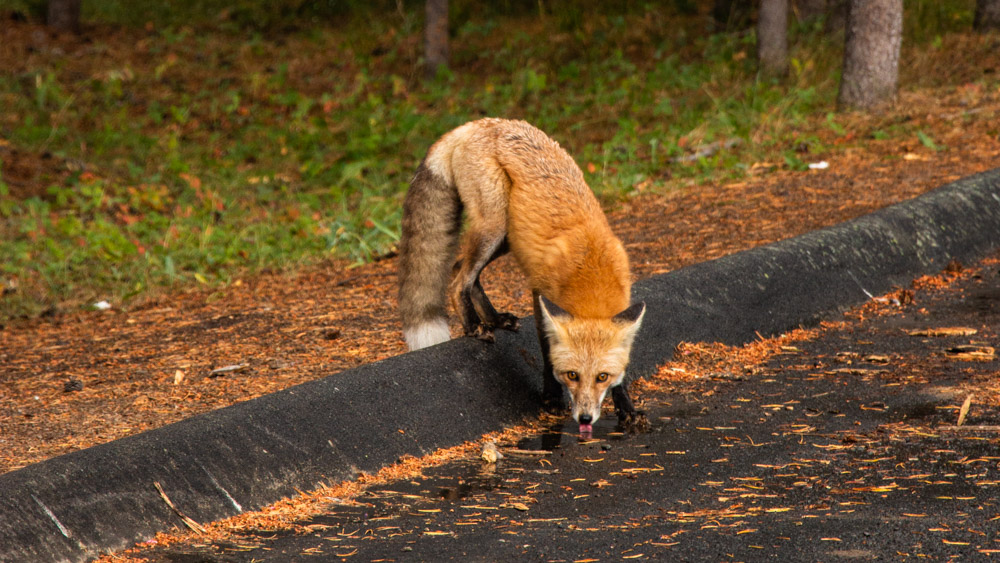
Lamar Valley
Every evening we would drive to Lamar Valley and look for wildlife. One night we saw two grizzlies. One of them on a carcass. Then we saw a pack of eight wolves. Luckily for us there were a couple gentlemen that allowed us to look through their spotting scopes. We had binoculars but the wolves and bears were a good distance away. We saw pronghorn, bison, elk, deer, and ospreys as well. Next time we’ll have a zoom lens so we can get some pics of the bears or wolves.
Hayden Valley
Heading south from Canyon Village you will pass through Hayden Valley. The valley will likely be full of bison and maybe elk depending on the time of year. Many birds will be in the ponds and streams running through the area. The best time to see bears and wolves will be early morning or late evening. The morning we drove through we got a glimpse of a couple wolves just before they went out of sight over a ridge.
You can spend as much or as little time as you wish here. If there are a lot of animals out then you may spend more time to watch and because of traffic (bear) jams due to wildlife. Often people will stop in the middle of the road to take pictures of bison. Sometimes the bison are just blocking the road.
